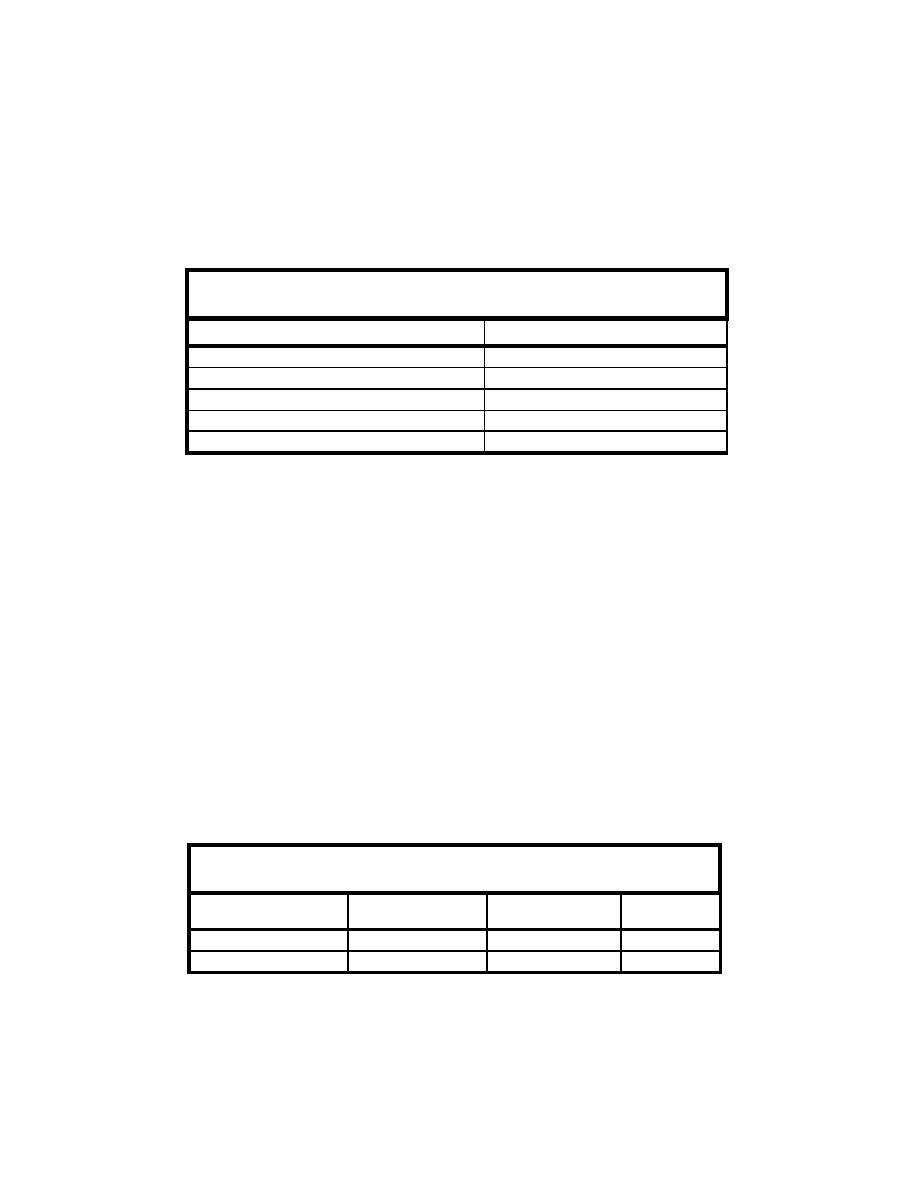
Mattituck Inlet a range of 15,000 to 25,000 cu/yd year was employed as the gross
transport rate.
Inlets with an r ratio of less than 20 tend to be unstable and non-navigable,
and sand bypassing is accomplished by wave-driven transport across the
bypassing bars. Goldsmith Inlet is non-navigable and does not have an ebb shoal
or bypassing bar, in conformance with the prediction.
Table 6-5
Goldsmith Inlet r Ratio and Associated Physical Quantities
Quantity
Goldsmith Inlet
Tidal range (ft)
3.2
5
9.5 10
Surface area (sq ft)
6
3.04 10
Tidal Prism (cu ft)
Transport rate (cu yd)
15,000 - 25,000
r ratio
4.5 7.5
Goldsmith Inlet channel cross-sectional area stability
The stability of Goldsmith Inlet was analyzed with the CEA model. Because
Goldsmith Inlet is a small inlet located on a sheltered coast, the predictive
equation derived by Byrne et al. (1980) for small inlets was selected and entered
as a user-specified relation in the model. The minimum cross-sectional area of
the inlets studied by Byrne et al. (1980) ranged from 5.4 to 270 sq ft, bracketing
the minimum cross-sectional area at Goldsmith Inlet of 80 sq ft. The channel
area was obtained from the bathymetry survey of 6-8 October 2002.
Table 6-6 summarizes the physical quantities that served as input to calculate
the equilibrium channel area of Goldsmith Inlet. Cross-section 2 in Figure 3-44a
was selected to represent the minimum cross-sectional area (80 sq ft) for
Goldsmith Inlet. This cross section has a width of 55 ft at this location. Cross
sections were generated based upon a limited number of data points, for which
the perimeter of the inlet was not explicitly recorded. Because the indicated
channel width (55 ft) was considered to be too large based on field observations,
the effective wetted width was taken to be 45 ft.
Table 6-6
Channel Equilibrium Area Information for Goldsmith Inlet
Ocean tide amplitude
(ft)
2.0
Channel length (ft)
1,300
5
Surface area (sq ft)
9.5 x 10
Channel width (ft)
45
Hydraulic radius (ft)
1.4
Channel area (ft)
80
A tidal range of 4 ft was employed in the stability analysis of Goldsmith Inlet
to compensate for the action of the sill (higher bottom) located at the entrance
and toward the opening into the pond, which limit the tide range in the pond to
3.2 ft. The range of 4 ft is considered an effective range that would exist if the
entrance were not depth limited by the sills.
279
Chapter 6 Inlet Morphology and Stability



 Previous Page
Previous Page
